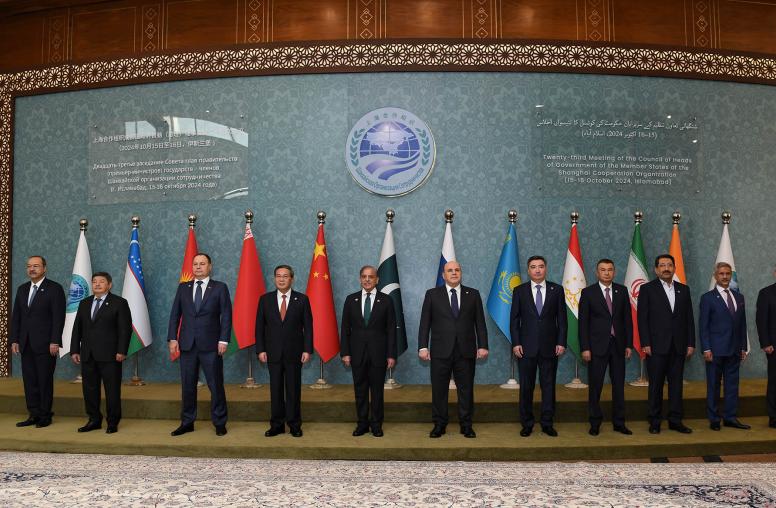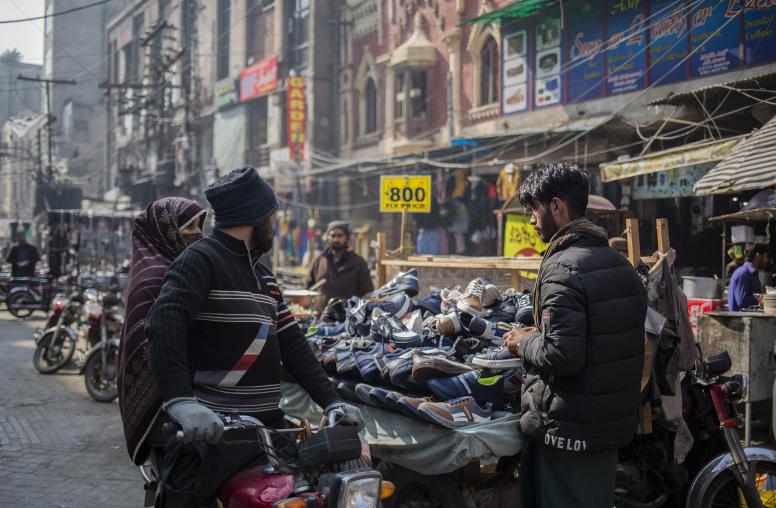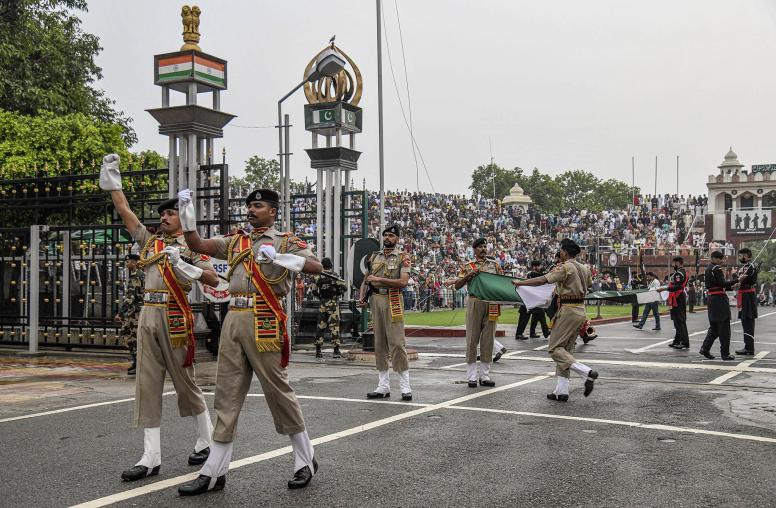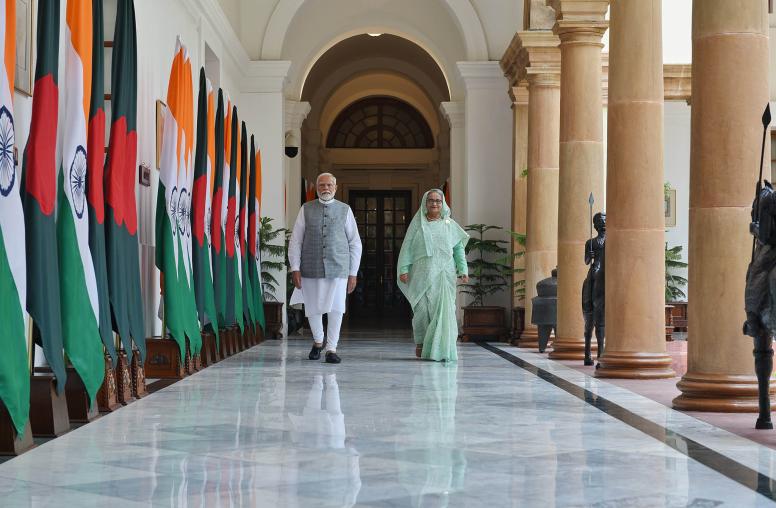On the Issues: Afghanistan/Pakistan
J Alexander Thier puts into context the new strains on Afghanistan and Pakistan's relationship including the recent assassination of former Prime Minister Benazir Bhutto and Afghanistan's resurgent Taliban and out of control opium trade.
In addition to the recent assassination of former Prime Minister Benazir Bhutto, a record number of suicide bombings and clashes with militants in several provinces have shaken Pakistan’s stability. Across the border in Afghanistan, a resurgent Taliban and an out of control opium trade pose serious challenges to NATO and the Afghan government in their effort to pacify and rebuild the country. With al-Qaeda regrouping and a nuclear arsenal in Pakistan, the situation in Pakistan and Afghanistan poses enormous security implications for the U.S., the region, and the world.
USIP asked its Director of Afghansitan and Pakistan Programs, J Alexander Thier, an attorney who has spent 14 years working on Afghanistan and Pakistan, to put these issues into context.
- What is the state of relations between Pakistan and Afghanistan?
- How will Bhutto's assassination impact relations between the two countries?
- On the morning of Benazir Bhutto's killing, she met with Afghan President Hamid Karzai. What was the nature of the meeting?
- Did the Peace Jirga in Afghanistan from August 9-12 produce any positive outcomes?
- The U.S. government considers both Afghanistan and Pakistan allies, even when they are at odds with one another. In the wake of Bhutto’s assassination, Can the U.S. be influential in repairing this breach?
- Another of the shared challenges facing these countries is the booming opium trade. Is there any hope of reducing the flow of narcotics between these countries?
Mourners in Rawalpindi, Pakistan where opposition
leader Benazir Bhutto was assassinated. (AP Photo)
What is the state of relations between Pakistan and Afghanistan?
The fates of these two nations are inextricably tied. The story of Afghanistan-Pakistan relations is a long and complex one. They are two countries with many things in common: religion (Islam), several ethnic groups (Pashtuns and Baloch), and thousands of miles of border. They also share a border region that has never truly come under the control of any government. In the 1980s, the U.S. and others used this to its advantage in funding groups of mujahideen, or Islamic holy warriors, based in the region who could easily cross back and forth between the two countries in the decade-long insurgency against the Soviet presence in Afghanistan. These groups then turned on each other during an ensuing civil war, further ravaging the country until the ultra-conservative Taliban emerged victorious in the late 1990s. In 2001, the Taliban were quickly routed by the U.S.-led international coalition, and have spent the last few years regrouping in the border regions between these conjoined countries.
Today, the resurgent Taliban and their supporters want to dislodge U.S. forces from Afghanistan, as well as attack the Afghan, Pakistani, and U.S. governments. These groups—a mixture of Afghans, Pakistanis, and other nationalities—organize, recruit, and train militants in Pakistan who then cross the border to attack foreign forces in Afghanistan. The insurgents’ ability to use Pakistan as a safe haven makes it very difficult for the Afghan and international forces to fight them.
For the last 22 months, Afghanistan and Pakistan have engaged in a war of words over who is to blame for the success of the insurgency. However, these militant forces have begun to challenge the government in Pakistan as well, which may ultimately lead to increased cooperation between the two nations.
How will Bhutto's assassination impact relations between the two countries?
The impact is potentially enormous. What happens in Pakistan deeply affects Afghanistan, and Bhutto’s assassination and the overall political turmoil there is, at a minimum, drawing critical attention away from the battle against Islamic militants in the border regions. The more the Afghan insurgency and al-Qaeda have a free hand to organize, plan, and train in Pakistan, the more relations between Kabul and Islamabad deteriorate. Even more dangerous is the possibility that internal conflict in Pakistan will increase considerably, leading to a breakdown of the state, which would have disastrous consequences for Afghanistan and the region.
Their meeting was to discuss relations between Pakistan and Afghanistan, and how those two countries would jointly address the enormous problem of militant groups in the border region that challenge their governments. Many Afghan leaders were hopeful that a return to democracy in Pakistan would reinvigorate the effort to combat the growing influence of the Taliban and al-Qaeda, and would improve relations between their countries. As Afghan Foreign Minister Rangin Dadfar Spanta said to Radio Free Afghanistan after the assassination, “[Bhutto] was so hopeful of winning the coming election, [and] of establishing a friendly relationship based on brotherhood with the Afghan nation and fighting against the common threat of terrorism."
Did the Peace Jirga in Afghanistan from August 9-12 produce any positive outcomes?
Senior officials in Kabul told me that they felt that the meeting represented a breakthrough – or at least a positive step in relations between the two countries. Getting the most affected communities together to discuss the challenges that face them is definitely a step in the right direction. I have been to several national jirgas in Afghanistan, and they can play an important role by providing a baseline of common goals and values. The idea for this peace jirga emerged over a year ago, and negotiations over location, representation, and agenda were tense given already strained relations. President Musharraf was reluctant about the jirga all along, and he cancelled his participation in the opening ceremony in Kabul at the last minute, embarrassing both Presidents Karzai and Bush, who had helped to broker the agreement for the meeting. However, thanks to significant international pressure, Musharraf did attend the closing of the jirga—and made a remarkable speech acknowledging, for the first time, Pakistan’s partial culpability for the ongoing insurgency in Afghanistan.
Most of the legitimate community representatives from these areas may not embrace central government control, but they reject the militant radicalism that is ravaging their communities. A communiqué from the assembled body signaled commitment to fight terrorism on both sides of the border. Implementation, however, will be hard. The Afghan and Pakistan Taliban groups have guns, funding, and international support, and both the Afghan and Pakistani governments are weak in these areas.
The U.S. has a tremendous amount of influence with both countries. In many ways, Pakistan is a more complex problem for the U.S. than Afghanistan, because our relationship with the Musharraf government and the Pakistani people is less stable. We have relied heavily on Musharraf to support our agenda after September 11, but the Pakistani government has also failed to deliver on critical items on the U.S. agenda: removing militant safe havens, shutting down radical madrassas, and reinstating democracy. U.S. military and financial support to Pakistan is significant, however, and the Pakistani government is unlikely to risk that during a tense domestic period.
Because success in either of these countries is dependent on success in the other, I think that the U.S. should immediately appoint a high-level envoy for Pakistan and Afghanistan, who can raise the level of this issue in both Washington and between Kabul and Islamabad. We cannot continue to think of the border as a true dividing line, because the problems we face – terrorism, narcotics, etc – certainly treat the border as sacrosanct.
Afghanistan has an enormous opium problem. Last year, Afghanistan’s record opium production accounted for 93 percent of the entire world supply, and shows no signs of slowing. Opium production accounts for nearly 40 percent of the entire Afghan economy, meaning that hundreds of thousands of Afghans—mostly poor farmers—are relying on the trade. The scale of this problem is unprecedented and will require a very long-term approach if we hope to wean the Afghan economy from the trade.
The U.S. and its international and Afghan partners have been investing hundreds of millions of dollars into counter-narcotics efforts in the last few years, including programs to eradicate poppy, to interdict and prosecute traffickers, and to provide alternative livelihoods for Afghan farmers. Thus far, these efforts have had little overall impact on the trade due to a variety of factors. First, sheer economics: Afghanistan is a subsistence farming economy, one of the poorest in the world, and Afghan farmers can make five to ten times more money planting opium than wheat or other crops. Second, because the Afghan government is relatively weak and money from the drug trade is extremely corrupting, there is very little effective enforcement and therefore little risk to growing and trading opium. Third, there is tremendous instability in several of the key opium-producing areas of the country, and that insecurity helps feed the trade and makes counter-narcotics programs impossible to implement.
Overall, I think that we are starting to learn from our efforts in the region. For instance, a new counter-narcotics strategy calls for greater cooperation and coordination between counter-narcotics and counter-insurgency efforts. But progress is going to be slow and needs to be closely tied with economic alternatives for the farmers concerned. Any effort that targets farmers without presenting a compelling vision of a poppy-free future will likely lose us critical Afghan support in the long battle against the insurgency.
The views expressed here are not necessarily those of USIP, which does not advocate specific policy positions.




